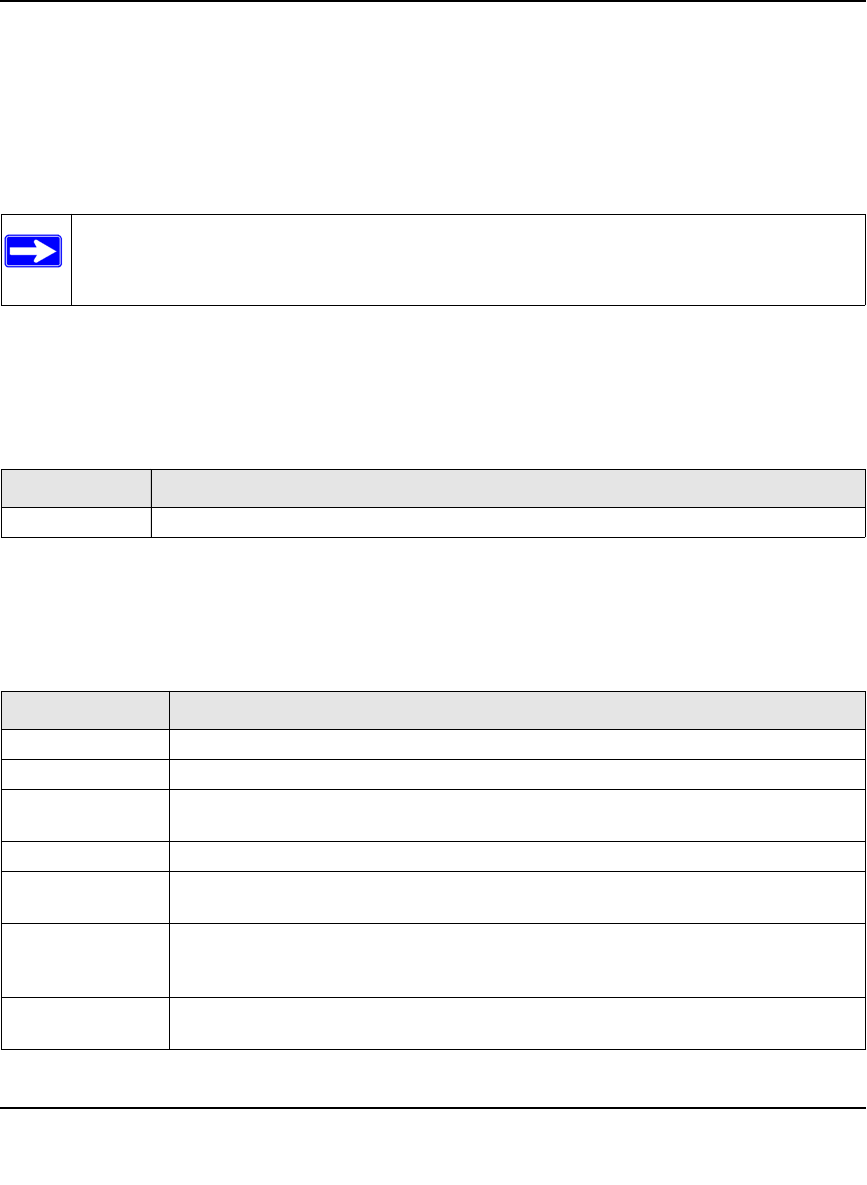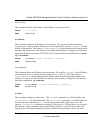
ProSafe XSM7224S Managed Stackable Switch CLI Manual, Software Version 9.0
Routing Commands 4-17
v1.0, November 2010
prefixes keyword, the <ip-address> and <mask> pair becomes the prefix, and the
command displays the routes to the addresses that match that prefix. Use the <protocol>
parameter to specify the protocol that installed the routes. The value for <protocol> can be
connected, ospf, rip, or static. Use the all parameter to display all routes including best
and non-best routes. If you do not use the all parameter, the command only displays the best
route.
The show ip route command displays the routing tables in the following format:
Code IP-Address/Mask [Preference/Metric] via Next-Hop, Route-Timestamp,
Interface
The columns for the routing table display the following information:
Note: If you use the connected keyword for <protocol>, the all option is not
available because there are no best or non-best connected routes.
Format show ip route [{<ip-address> [<protocol>] | {<ip-address> <mask>
[longer-prefixes] [<protocol>] | <protocol>} [all] | all}]
Modes • Privileged EXEC
• User EXEC
Term Definition
Route Codes The key for the routing protocol codes that might appear in the routing table output.
Term Definition
Code The codes for the routing protocols that created the routes.
IP-Address/Mask The IP-Address and mask of the destination network corresponding to this route.
Preference The administrative distance associated with this route. Routes with low values are
preferred over routes with higher values.
Metric The cost associated with this route.
via Next-Hop The outgoing router IP address to use when forwarding traffic to the next router (if any)
in the path toward the destination.
Route-Timestamp The last updated time for dynamic routes. The format of Route-Timestamp will be
• Days:Hours:Minutes if days > = 1
• Hours:Minutes:Seconds if days < 1
Interface The outgoing router interface to use when forwarding traffic to the next destination. For
reject routes, the next hop interface would be Null0 interface.


















